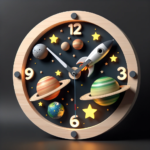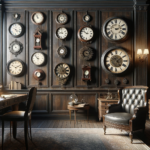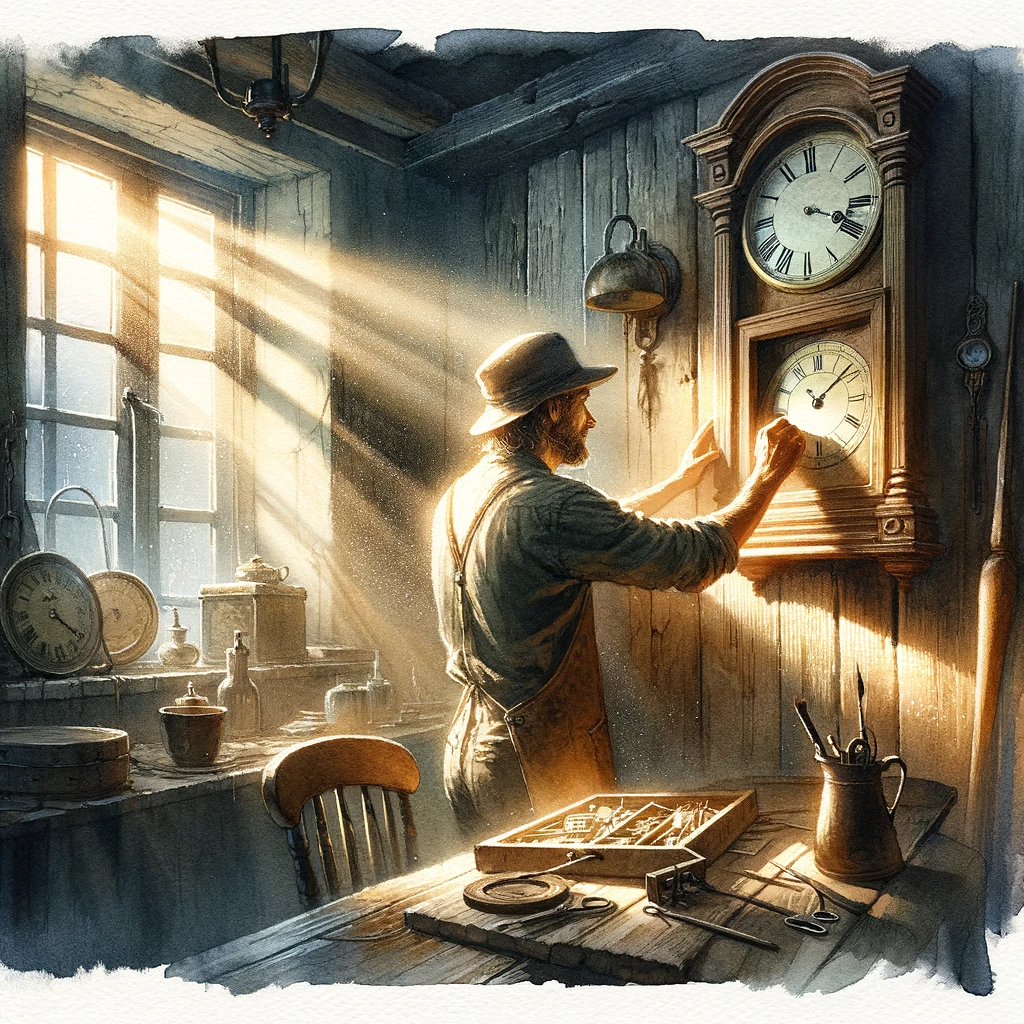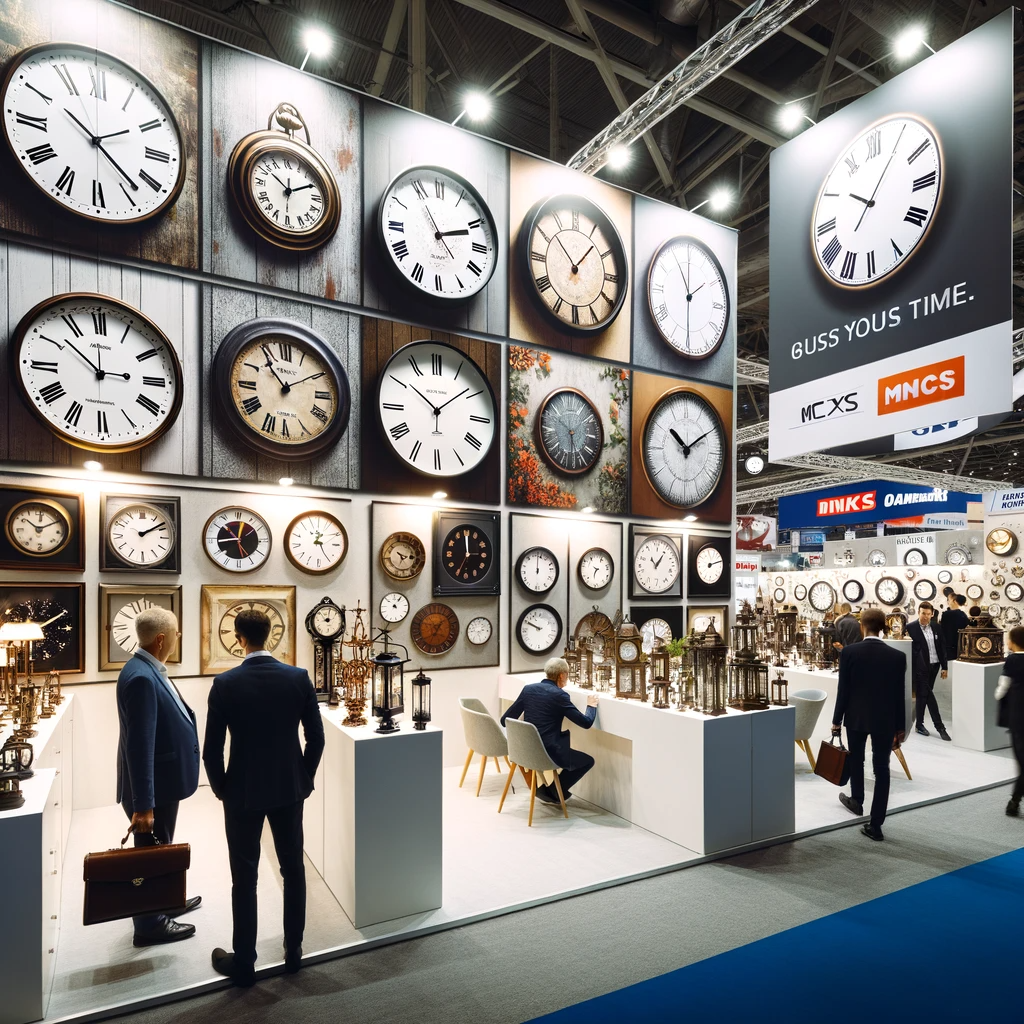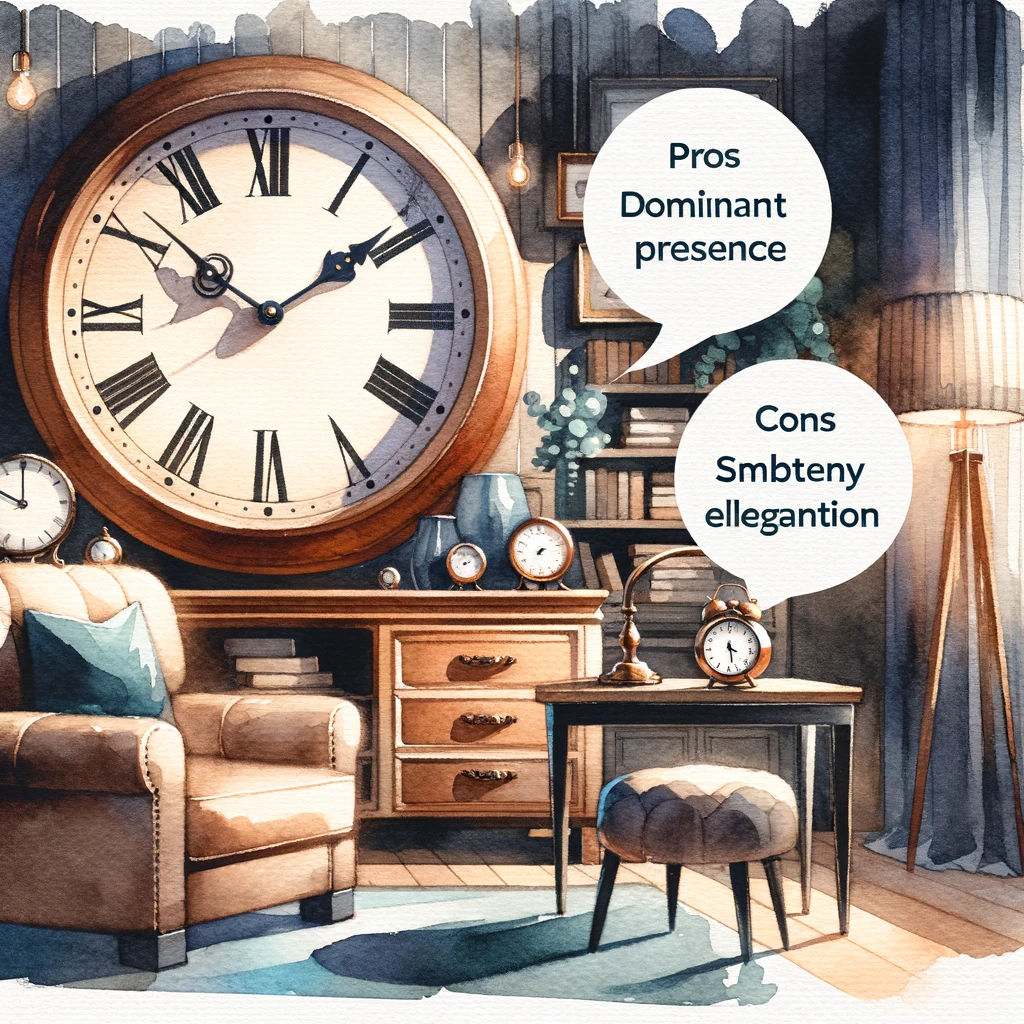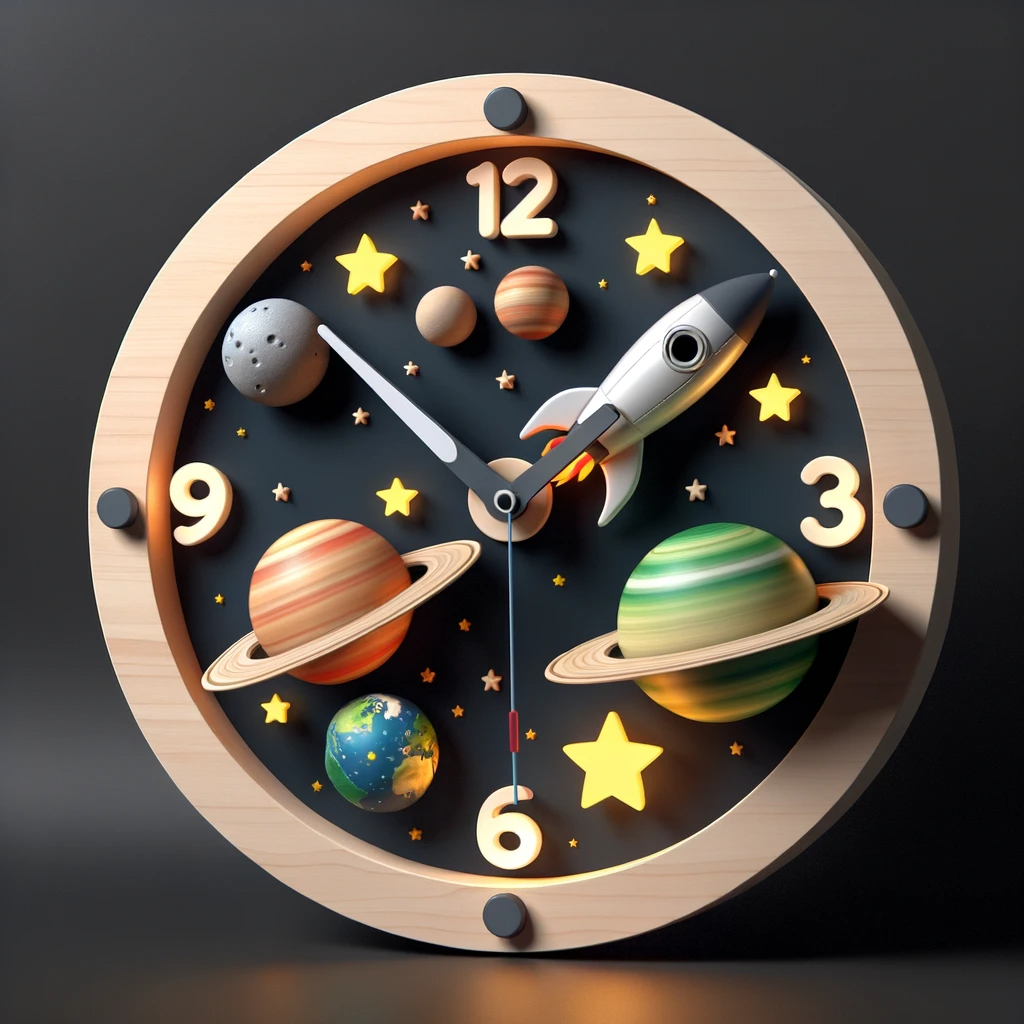Introduction
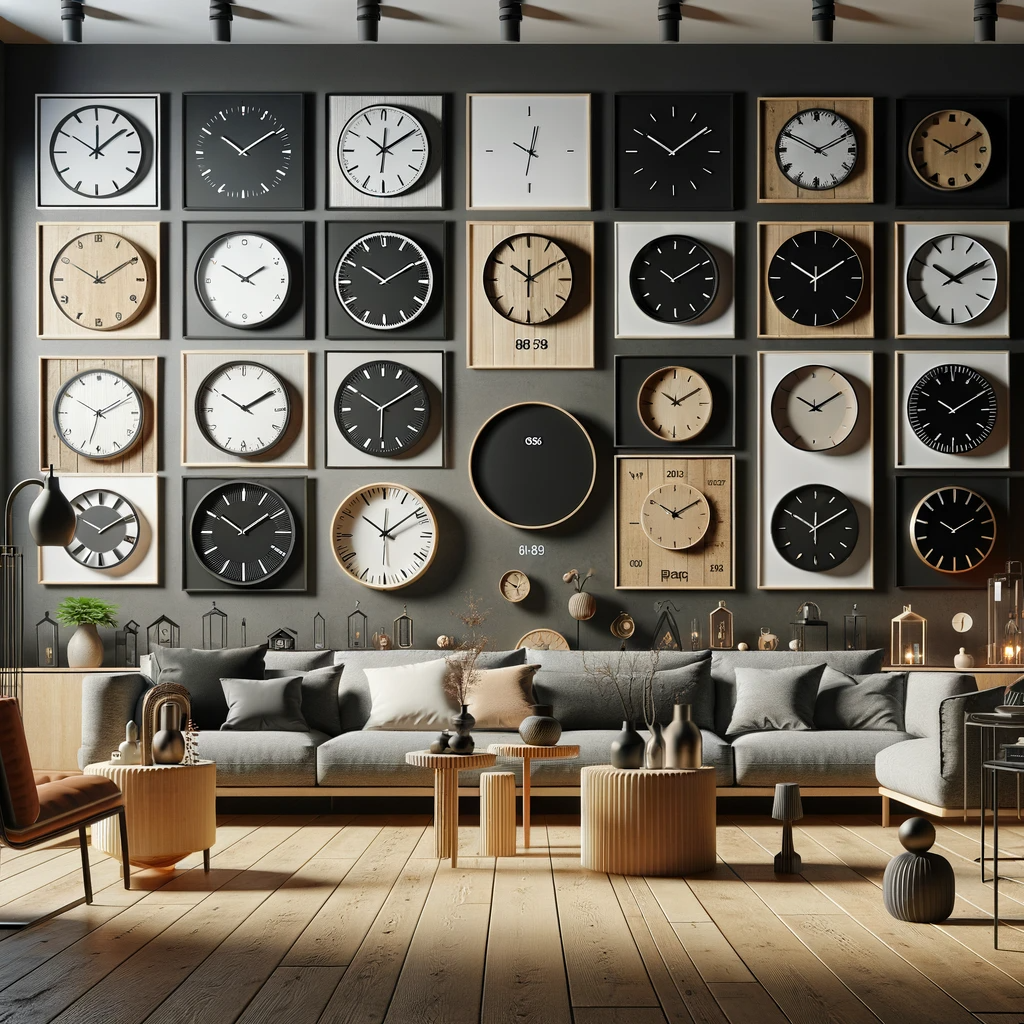
Wall Clocks: Practical and Aesthetic Timekeepers Wall clocks are timekeeping devices that adorn walls while serving both functional and decorative purposes.
These timepieces have been an integral part of human civilization, enabling us to stay organized, punctual, and aware of the passing time. In addition to their practical function, wall clocks also enhance the aesthetic appeal of any space, becoming an essential element of interior design.
Definition of a wall clock

A wall clock is a mechanical or electronic device specifically designed to measure and display time on a wall surface. It typically consists of two essential components: the clock face or dial, which displays the hours and minutes, and the clock movement mechanism that drives the hands around the dial. Wall clocks can be powered by various means such as batteries or electricity.
Importance of wall clocks as functional and decorative pieces
As functional pieces, wall clocks play a vital role in our daily lives by providing us with an accurate representation of time. They keep us on schedule for appointments, meetings, and various activities throughout the day.
Wall clocks eliminate our reliance on digital devices for checking the time while adding a touch of elegance to any room. Beyond their functionality, wall clocks contribute to the aesthetic appeal of interior spaces.
The wide variety in designs allows for customization based on personal preferences or specific decorative themes. Whether it’s a classic wooden grandfather clock adorning a living room or a sleek modern minimalist clock complementing an office space, these timepieces become focal points enhancing visual interest and adding character to any environment.
Wall clocks serve not only as practical instruments for measuring time but also as visually captivating decor elements within our living spaces. Their presence adds charm and sophistication while ensuring we stay organized and punctual in today’s fast-paced world.
Ancient Timekeeping Devices
Sundials measured time using the position of the sun’s shadow cast on a marked surface. Water clocks, also known as clepsydra, relied on the flow of water from one container to another to measure the passage of time. These early timekeeping devices were crucial for civilizations to organize their daily activities and understand celestial movements.
Development of Mechanical Clocks in the Middle Ages
In the Middle Ages, mechanical clocks emerged as a more precise way to measure time. These clocks used intricate mechanisms like gears, weights, and escapements to regulate movement. Initially found in monasteries and palaces, mechanical clocks became symbols of prestige and power.
Introduction of Pendulum Clocks in the 17th Century
The 17th century witnessed a significant development in clock technology with the introduction of pendulum clocks. Galileo Galilei’s observation that a pendulum swings with precise regularity led Christian Huygens to invent the first accurate pendulum clock in 1656. The incorporation of a pendulum improved accuracy by reducing timing errors caused by external factors such as temperature or air pressure.
Industrial Revolution and Mass Production of Wall Clocks
With the onset of the Industrial Revolution in the late 18th century, clock manufacturing experienced a revolution itself. Innovations like interchangeable parts and assembly lines enabled mass production of wall clocks at lower costs. This led to increased availability and accessibility for people from various social classes, making wall clocks an essential household item that served both functional and aesthetic purposes.
Regulator Style: Elegant and Minimalist Design
Regulator style wall clocks have an elegant and minimalist design. These clocks feature a long case and a pendulum that regulates the movement of the hands. The Vienna regulator is one notable variant of this style, which originated in Austria.
Known for its ornate wooden cases, Vienna regulators exude a sense of sophistication and craftsmanship. The intricate carvings and detailed embellishments add to their aesthetic appeal.
The schoolhouse regulator is another popular style within the regulator category. It gained popularity in American schools due to its simple yet timeless design.
These clocks often have rectangular cases made of wood, with clean lines and minimal ornamentation. Their design focuses on functionality and readability, making them suitable for various settings such as classrooms or offices.
Grandfather Clock Style: Tall with Pendulum and Weights
Grandfather clock style embodies tall, freestanding clocks that incorporate a pendulum and weights within their mechanism. These iconic timepieces make an impressive statement in any room they grace.
The Chippendale grandfather clock stands out with its elaborate woodwork that showcases intricate details such as carvings, scrolls, or finials. They embody classic elegance and often become focal points in traditional home decor.
Comitti grandfather clocks are known for their high-quality craftsmanship and adherence to traditional designs.
These meticulously crafted timepieces exude a sense of luxury with their exquisite woodwork, polished finishes, and attention to detail.
Comitti grandfather clocks not only display accurate time but also serve as heirlooms that can be passed down through generations due to their enduring beauty.
Overall, classic wall clock styles like the regulator style or the grandfather clock style offer timeless elegance while reflecting different design trends throughout history.
Minimalist Style: Sleek and Contemporary Designs with Clean Lines
Scandinavian-inspired wall clocks focus on simplicity and natural materials like wood. These clocks typically have a minimalist design, featuring clean lines and a streamlined appearance. The emphasis is on functionality and understated elegance.
The color palette tends to be neutral, with shades of white, grey, and black dominating the designs. The clock faces are often uncluttered, displaying only the essential elements such as hour markers and hands.
Scandinavian-inspired wall clocks seamlessly blend into modern interiors, complementing various decorating styles from minimalistic to Scandinavian or even industrial. Industrial-style wall clocks incorporate metal elements and exposed gears.
Inspired by the rugged charm of factories and machinery, these clocks exude a raw industrial aesthetic. Often made from materials like iron or steel, they showcase visible gears and mechanisms that give them an authentic vintage feel.
The design is bold and edgy, with rough textures and distressed finishes adding character to the timepieces. Industrial-style wall clocks are perfect for those who appreciate a unique blend of functionality and industrial aesthetics in their home decor.
Retro Style: Inspired by Mid-Century Design Trends
Vintage flip-clock wall clocks display time using flipping numbers or cards. These nostalgic timepieces harken back to an earlier era when flip-clocks were popularly used in offices or public spaces. Each minute or hour change is accompanied by a satisfying mechanical sound as the numbers rotate into place.
Vintage flip-clock wall clocks often feature a sturdy frame made from materials like metal or wood in various colors such as brass, gold, or warm brown tones. Sunburst wall clocks feature radiating spokes reminiscent of the sun.
This iconic mid-century design trend brings an element of drama to spaces through its eye-catching form. The clock face is typically positioned at the center while metallic spoke-like rays extend outward in different lengths creating an overall sunburst effect.
Sunburst wall clocks come in various sizes and can be found in materials like brass, gold, or even wood. They make a bold statement piece on the wall and add a touch of retro elegance to any room’s decor.
Niche Wall Clock Subtopics
Steampunk-inspired wall clocks: A Fusion of Victoriana and Industrial Aesthetics
Steampunk-inspired wall clocks incorporate Victorian-era aesthetics with industrial elements like gears and pipes. These unique timepieces pay homage to the retro-futuristic genre that originated in the 1980s. The clock faces often feature intricate brass details, ornate filigree, and vintage-inspired typography.
The use of exposed gears not only adds visual interest but also gives a nod to the industrial revolution. Steampunk wall clocks are designed to create a sense of nostalgia while embracing a vision of what the future might have looked like in the Victorian era.
Conclusion: Time Flies with Wall Clock Styles!

Exploring wall clock styles and design trends is an exciting journey through history, aesthetics, and personal preferences. From classic regulator and grandfather clock styles to modern minimalist designs or even niche steampunk options, there is a wall clock for every taste and decor style.
Whether you are seeking a functional timekeeping device or a statement piece that adds personality to your space, wall clocks offer an array of options to suit your individual needs.
Embrace the timeless charm of these fascinating timepieces and let them remind you that time flies by but can also be beautifully captured on your walls. So choose wisely, express yourself through your choice of wall clock style, and enjoy every passing moment in style!



